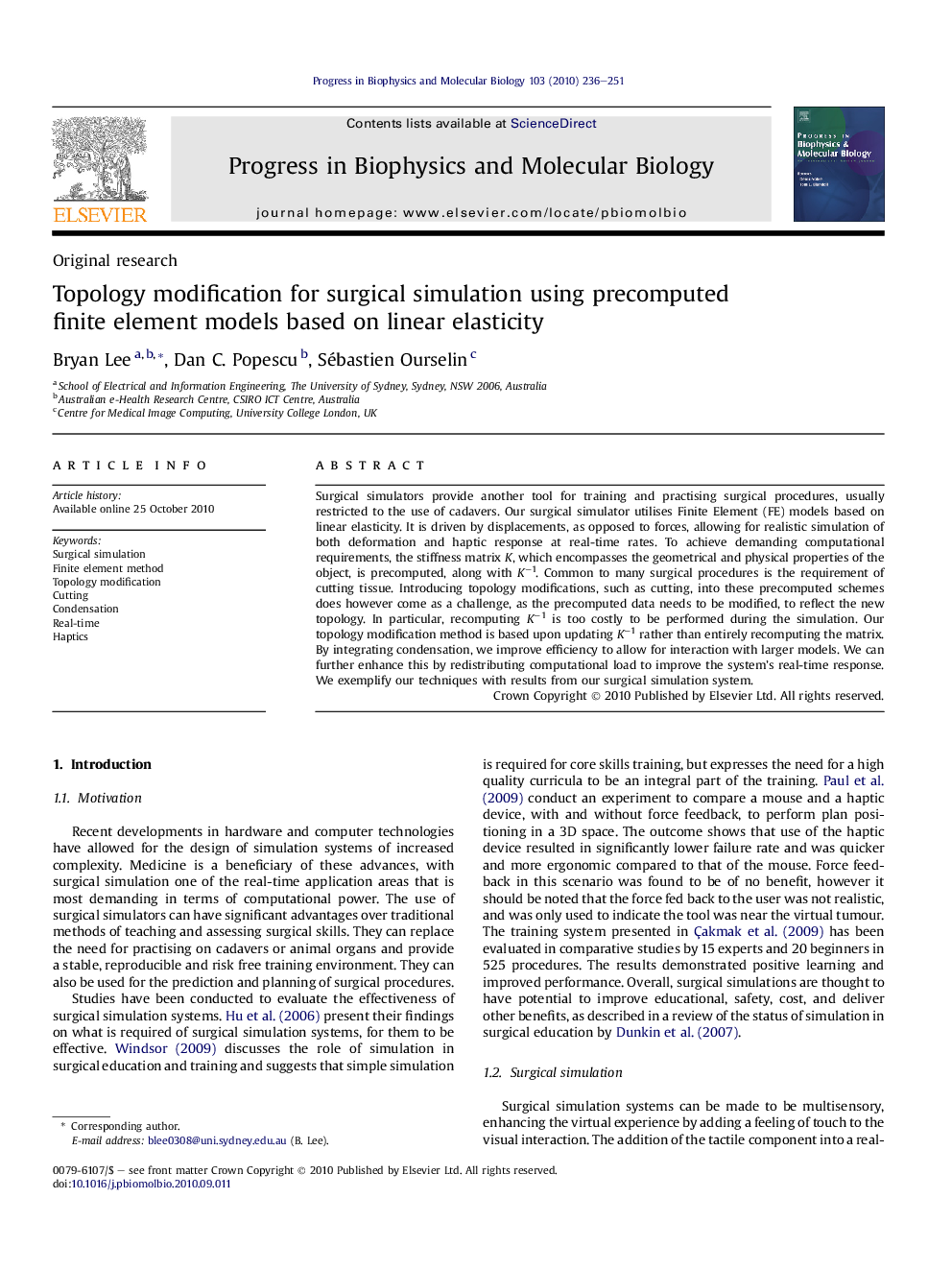| Article ID | Journal | Published Year | Pages | File Type |
|---|---|---|---|---|
| 2070584 | Progress in Biophysics and Molecular Biology | 2010 | 16 Pages |
Surgical simulators provide another tool for training and practising surgical procedures, usually restricted to the use of cadavers. Our surgical simulator utilises Finite Element (FE) models based on linear elasticity. It is driven by displacements, as opposed to forces, allowing for realistic simulation of both deformation and haptic response at real-time rates. To achieve demanding computational requirements, the stiffness matrix K, which encompasses the geometrical and physical properties of the object, is precomputed, along with K−1. Common to many surgical procedures is the requirement of cutting tissue. Introducing topology modifications, such as cutting, into these precomputed schemes does however come as a challenge, as the precomputed data needs to be modified, to reflect the new topology. In particular, recomputing K−1 is too costly to be performed during the simulation. Our topology modification method is based upon updating K−1 rather than entirely recomputing the matrix. By integrating condensation, we improve efficiency to allow for interaction with larger models. We can further enhance this by redistributing computational load to improve the system’s real-time response. We exemplify our techniques with results from our surgical simulation system.
